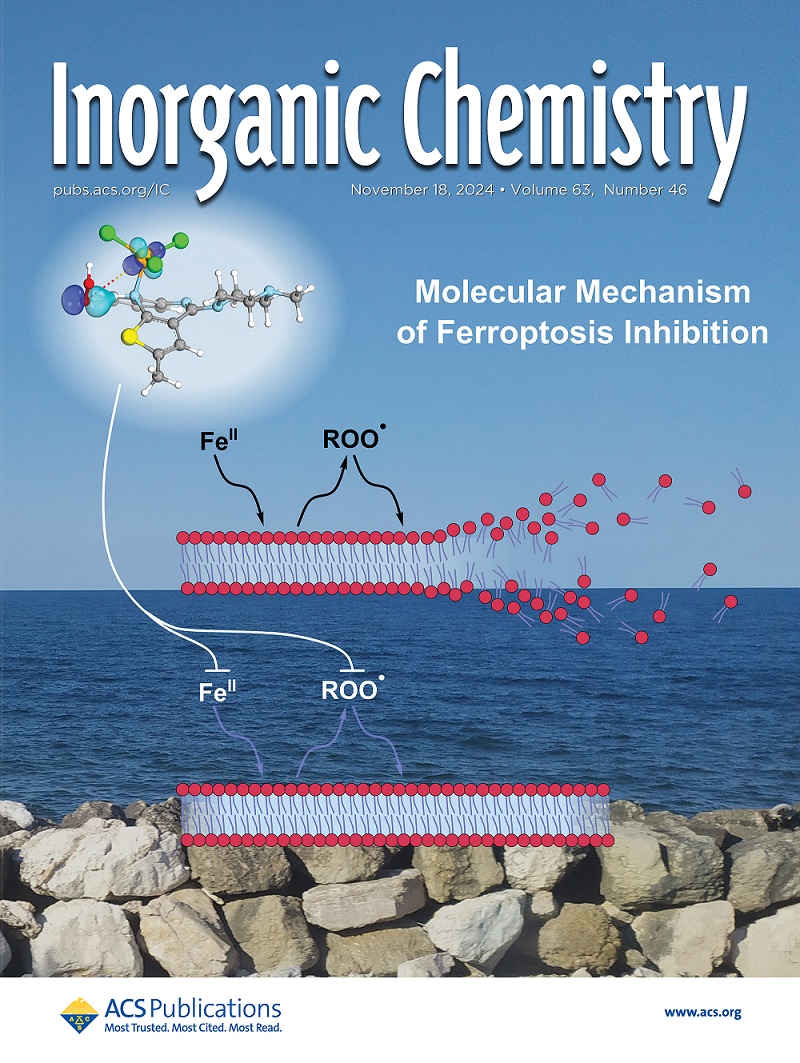DFT Calculation Screening of Transition Metal (TM) Doped MgO Catalyzed Dry Reforming of Methane Reaction and Related Experimental Verification.
IF 4.3
2区 化学
Q1 CHEMISTRY, INORGANIC & NUCLEAR
引用次数: 0
Abstract
Theoretical calculations can quickly screen for effective catalyst systems, and experimental verification is also essential. This paper uses density functional theory (DFT) to construct a transition metal (TM)-doped MgO structure. By studying the effects of TM doping on key steps in dry reforming of methane (DRM) reaction, including CO2 adsorption and catalytic CO2 dissociation, a comprehensive screening of 30 TMs was conducted. It indicates that TM atoms can promote the adsorption of CO2 by MgO due to the presence of electron deficient d orbitals, and TM can also serve as main adsorption site to attract CO2. After stability analysis of TM/MgO, calculation of CO2 adsorption and dissociation, and comprehensive consideration of adsorption energy (Eads) and energy barrier (Ea), it was screened from 30 systems that Mo/MgO had the lowest catalytic reaction Ea, Zr/MgO had the best Eads, and Fe/MgO had the most balanced comprehensive properties. Based on theoretical calculations, Fe/MgO, Zr/MgO, and Mo/MgO were synthesized, characterized, and applied to catalyze DRM reaction. The reaction mechanism of TM/MgO(TM = Fe, Zr, Mo) catalyzing DRM was analyzed and compared from the perspectives of catalytic activity, stability, and types and quantities of carbon deposits, achieving the goal of theoretical calculations guiding experimental synthesis.过渡金属掺杂MgO催化甲烷干重整反应的DFT计算筛选及实验验证
理论计算可以快速筛选有效的催化剂体系,实验验证也是必不可少的。利用密度泛函理论(DFT)构建了过渡金属(TM)掺杂MgO结构。通过研究TM掺杂对甲烷干重整反应关键步骤CO2吸附和催化CO2解离的影响,对30种TM进行了综合筛选。说明TM原子由于存在缺电子d轨道,可以促进MgO对CO2的吸附,TM也可以作为吸引CO2的主要吸附位点。通过对TM/MgO的稳定性分析、CO2吸附解离计算,并综合考虑吸附能(Eads)和能垒(Ea),从30个体系中筛选出Mo/MgO的催化反应Ea最低,Zr/MgO的Eads最好,Fe/MgO的综合性能最平衡。在理论计算的基础上,合成了Fe/MgO、Zr/MgO和Mo/MgO,并对其进行了表征,并应用于催化DRM反应。从催化活性、稳定性、积碳种类和数量等方面分析比较TM/MgO(TM = Fe, Zr, Mo)催化DRM的反应机理,达到理论计算指导实验合成的目的。
本文章由计算机程序翻译,如有差异,请以英文原文为准。
求助全文
约1分钟内获得全文
求助全文
来源期刊

Inorganic Chemistry
化学-无机化学与核化学
CiteScore
7.60
自引率
13.00%
发文量
1960
审稿时长
1.9 months
期刊介绍:
Inorganic Chemistry publishes fundamental studies in all phases of inorganic chemistry. Coverage includes experimental and theoretical reports on quantitative studies of structure and thermodynamics, kinetics, mechanisms of inorganic reactions, bioinorganic chemistry, and relevant aspects of organometallic chemistry, solid-state phenomena, and chemical bonding theory. Emphasis is placed on the synthesis, structure, thermodynamics, reactivity, spectroscopy, and bonding properties of significant new and known compounds.
 求助内容:
求助内容: 应助结果提醒方式:
应助结果提醒方式:


